- Home
- Farley Mowat
Sea of Slaughter Page 3
Sea of Slaughter Read online
Page 3
The Atlantic coast of Labrador was probably not favoured as a spearbill breeding ground, being too much encumbered with pack ice during the summer season. However, the northern bays of Newfoundland provided ideal conditions and may have supported as many as twenty rookeries, some of them extremely large.
Newfoundland’s west coast seems to have had rookeries on Lark Island, the Stearing Islands off Cow Head, Gregory Island in Bay of Islands (where a headland and a deep bay bear the Penguin name), Green Island off Flowers Cove, and Shag Island at the entrance to Port au Port Bay, and in St. John’s Bay.
The south coast of Newfoundland was evidently well-endowed with spearbill colonies, including Virgin Rock in Placentia Bay (from which seventeenth-century French fishermen and soldiers are reported to have provided themselves with spearbill meat and eggs); Green Island near St-Pierre et Miquelon, which, according to local tradition, may still have harboured a few pengouins until the beginning of the eighteenth century; Bird Island at the mouth of Fortune Bay; Penguin Island, which we have already discussed; and the Ramea group where, so I was told by an old man of mixed European and Indian blood from nearby Burgeo, the last penwins were killed on Offer Rock soon after his Micmac ancestors emigrated to Newfoundland from Cape Breton, which would have been about 1750.
The north shore of the Gulf of St. Lawrence was exceptionally good seabird territory, at one time harbouring scores of colonies and rookeries on its innumerable islands. There is no way of knowing now how many were occupied by spearbills, but the big, flightless birds were probably hunted from most of them by sixteenth-century Basque whalers for whom this would have been a minor act of slaughter.
There are few suitable sites for seabird rookeries in the southern Gulf, except Bonaventure Island. However, in 1593, the English vessel Marigold found pengwyns at Cape Breton Island during the breeding season, and the birds were still being reported from there in 1750 as peringouins. The Cape Breton Micmacs have a tradition that their ancestors took spearbills and eggs on St. Paul Island in Cabot Strait, from an unidentified island in Chedabucto Bay, and from Sea Wolf Island.
Rookeries along the Atlantic coast of Nova Scotia may have been comparatively few in number due to a shortage of suitable sites, but that they did exist seems evident from the fact that, as late as 1758, local Indians were bringing pengwins into Halifax to supply the colonists.
The southern tip of Nova Scotia and the opposite shores of New Brunswick across the mouth of the Bay of Fundy offered a number of excellent spearbill sites. When Champlain visited the Tusket Island group in the early summer of 1604, he found quantities of nesting seabirds which he called tangeaux and which his men killed with sticks. Some ornithologists contend that “tangeaux” means gannets, but on the very next page of his own account, Champlain describes what is undoubtedly a gannet colony on a high island now called Gannet Rock, eleven miles north of the Tuskets, and identifies the bird as margos (margeaux), which is the French name for gannet. Noddy Island and Devil’s Limb, south of the Tuskets, may also have been home to spearbill colonies, along with Machias Seal Island and at least some of the islands in the Grand Manan assemblage.
Farther south, along the coast of the Gulf of Maine, early accounts testify to the one-time presence of spearbills in considerable numbers. Some modern authorities insist these reports must all refer to migratory birds that bred at some far northern rookery such as Funk Island. The fact that many were seen and killed during the breeding season is explained on the supposition that these were immature or non-breeding birds.
However, in 1603, Captain George Weymouth landed on a small island in the mouth of Maine’s Muscongus Bay and was much impressed to find “very great egg shells, bigger than goose eggs.” It is certainly within the realm of probability that these were the shells of spearbill eggs (amongst the largest eggs laid by any North American bird), which had been collected by Indians at rookeries on Monhegan or Manana Island some ten miles offshore, in the manner of the Newfoundland Beothuks at Funk Island.
David Ingram, an English sailor who was marooned on the shores of the Gulf of Mexico in 1568 and walked north to Nova Scotia, described a bird of “the shape and bigness of a goose, but their wings are covered with small, callow feathers and cannot fly: You may drive them like sheep.” Which is a good description of spearbills and their behaviour at a rookery. Josselyn, visiting New England circa 1670, described “the Wobble, an ill-shaped fowl having no long Feathers in their Pinions, which is the reason they cannot fly.” The spearbill was the only flightless bird Josselyn could have encountered and, since “Wobble” seems an apt description of the way it must have walked on land, and spearbills never came to land except to breed, I accept this as a strong indication of colonies on the New England coast. Audubon remembered an old hunter from the Boston area who told him that great auks were still present about Nahant and other islands when he was young.
The finding of spearbill bones in Indian middens along the New England coast, and even as far south as Florida, establishes the fact that they were once found far to the south of the range currently ascribed to them by many biologists.
The importance of seabird rookeries to transatlantic seamen was enormous. These men were expected to survive and work like dogs on a diet consisting principally of salt meat and hard bread. The meat was mainly lean and stringy beef or horse, and the bread was a biscuit baked to the consistency of concrete and usually shot through with weevils. Even these almost inedible staples were frequently in short supply due to the miserliness of ship-owners who seemed to believe that “wind and water” were enough to feed a sailor. Indeed, it was usual to supply the ships with only enough salt meat for the outward voyage, leaving the hard-driven, half-starved men to forage for themselves upon arrival. Apart from fish (most kinds of which if eaten as a steady diet in cold latitudes can result in chronic malnutrition because of a low fat content), the most convenient single source of food in season was what could be had from the bird rookeries.
Initially, seabirds of a dozen or more species crowded the offshore islands and islets. Most were good fliers who could, and often did, nest on ledges and cliff faces where they were difficult to reach. Furthermore, adults tended to take wing at the approach of an intruder and so could seldom be killed in quantity except with a profligate expenditure of shot and powder. Consequently, the main weight of European predation fell on the most readily accessible species—of which the spearbill was especially attractive because of its large, fat, and well-muscled carcass. Its eggs, too, were preferred above all others, not only because of their great size (as long and broad as a human hand), but because they were so easily collected. There was no question about it: so long as it lasted, the spearbill was the best buy in the shop.
Analysis of Cartier’s and other contemporary accounts gives some conception of the magnitude of the destruction visited on the spearbill colonies. Cartier’s thirty-foot fishing barques were built to carry about four tons and, since the weight of an adult spearbill was twelve to fifteen pounds, a fully-loaded barque could transport up to 650 birds. Two such barque-loads might have strained the storage capacity of a sixty-ton vessel—but that is the amount, so we are told, that each vessel laded. However, some Basque ships sailing those waters displaced as much as 600 tons and could have comfortably stowed away several thousand spearbill carcasses—sufficient to last the summer season through and probably enough to feed the sailors on the homeward voyage.
In the 1570s, Captain Anthony Parkhurst wrote: “at an Island named Pengwin we may drive them on a plank into our ship, as many as will lade her... There is more meat on one of them than on a goose. The Frenchmen that fish near the grand bay do bring but small store of meat with them, but victual themselves always with these birds.”
A few years later, Edward Hayes, master of one of Sir Humphrey Gilbert’s ships, described “an island named Penguin [because] of a fowle there breeding in incredible abundance, which cannot
fly... which the Frenchmen take without difficulty... to barrel up with salt.”
Around 1600, Richard Whitbourne noted: “These Penguins are as big as geese and... they multiply so infinitely upon a certain flat island that men drive them from hence upon a board, into their boats by the hundreds at a time, as if God had made the innocency of so poor a creature to become such an admirable instrument for the sustenation of man.”
The idea that God created all living creatures to serve man’s needs was not, of course, unique with Whitbourne. It is deeply ingrained in Judeo-Christian philosophy and continues to provide one of the major rationalizations with which we justify the wholesale destruction of other animals.
Justifiable or not, the mass destruction of seabird rookeries in the New World proceeded apace. The birds were a staple of fishermen and settlers alike. Writing of the French presence in the region around 1615, Lescarbot tells us that “The greatest abundance [the people have] comes from certain islands where are such quantity of ducks, gannets, puffins, seagulls, cormorants and others that it is a wonderful thing to see [and] will seem to some almost incredible... we passed some of those islands [near Canso] where in a quarter of an hour we loaded our longboat with them. We had only to strike them down with staves until we were weary of striking.” Courtemanche, writing in 1705 about the north shore of the Gulf, describes the rookeries there and adds: “for a whole month they slaughter them with iron-tipped clubs in such quantity that it is an incredible thing.”
As guns and powder became cheaper and more available in the early eighteenth century, the seabird slaughter took on a new dimension, as this note from Cape Breton, circa 1750, attests. “The birds fly by in swarms to go to their laying in spring on the bird islands... At this time there is such prodigious carnage that we shot up to 1000 gunshots every day.”
The carnage resulting from the “gunning” of adult birds in passage to, from, and at the rookeries grew with the passing centuries. As late as 1900, punt-gunners on the north shore of the Gulf were shooting, in a single day, “half-a-boat load, which would be about four or five hundred eiders, scoters, puffins, murres, gulls etc.”
As if the destruction of adults and partly grown young was not horrendous enough, the seabirds had also to endure a mounting wastage of their eggs. Egging began in a relatively small way with casual raids on rookeries by ships’ crews and fishermen seeking food for themselves. As John Mason, writing about life in Newfoundland around 1620, put it: “The sea fowles are Gulls white and gray, Penguins, Sea Pigeons, Ice Birds, Bottlenoses and other sorts... [and] all are bountiful to us with their eggs, as good as our Turkie or Hens, with which the Islands are well replenished.”
This began to change after the beginning of the eighteenth century, by which time the rapid growth of population along the Atlantic seaboard was creating a commercial market for many “products” of land and sea... amongst them seabird eggs. Egging now became a profitable business and professional eggers began to scout the coasts, denuding every rookery they could find. By about 1780, American eggers had so savaged the bird islands along the eastern coasts of the United States that they could no longer supply the burgeoning demand from cities such as Boston and New York. Consequently, the export of seabird eggs became a profitable business for the British colonies to the north.
As was to be expected, the spearbill was a foremost victim in early times when it was still abundant. Aaron Thomas wrote this succinct description of penguin egging in Newfoundland.
“If you go to the Funks for eggs, to be certain of getting them fresh you pursue the following rule:—you drive, knock and Shove the poor Penguins in heaps. You then scrape all their Eggs in Tumps in the same manner you would a heap of Apples in an Orchard... these Eggs, from being dropped some time, are stale and useless, but you having cleared a space of ground... retire for a day or two... at the end of which time you will find plenty of Eggs—fresh for certain!”
If, as the St. Kildans claimed, the spearbill laid only a single egg, and did not lay again that year once the egg was destroyed, the result of such wholesale destruction can easily be foreseen.
A British naval captain investigating commercial egging in Newfoundland reported: “Parties repair [to the Funk Islands] to collect eggs and feathers. At one time a very considerable profit could be gained but lately, owing to the war of extermination, it has greatly diminished. One vessel nevertheless is said to have cleared 200 Pounds currency in a single trip.”
William Palmer, who visited Funk in 1887, added this postscript: “What must have been the multitudes of birds in former years on this lonely island. Great auks, murres, razorbills, puffins, Arctic terns, gannets undoubtedly swarmed, and were never molested except by an occasional visit from the now-extinct Newfoundland red man; but now since the white fisherman began to plunder it, how changed. Today but for the Arctic terns and the puffins the island may be said to be deserted. [Although] sixteen barrels of murres and razorbill eggs have been known to be gathered at a time and taken to St. John’s, we did not see a dozen eggs.”
It is to John James Audubon that we owe the most graphic account of what the egging business was like. In June of 1833, Audubon visited Nova Scotia where he met a party of eggers who, having taken some 40,000 seabird eggs, were selling them to an exporter in Halifax for twenty-five cents a dozen. A few days later, while visiting a bird island, he encountered two eggers “who had collected 800 dozen murres’ eggs and expected to get 2000 dozen... the number of broken eggs on the island created a fetid smell scarcely to be borne.” However, it was not until 1840, when he spent some weeks on the north shore of the Gulf of St. Lawrence, that Audubon experienced the full horror of the ugly business. What follows is a condensed version of his account.
“The Eggers great object is to plunder every nest, no matter where, and at whatever risk. They are the pest of the feathered tribes, and their brutal propensity to destroy the poor creatures after they have robbed them is abundantly gratified. But I could not entirely credit all their cruelties until I had actually witnessed their proceedings.
“Their vessel is a shabby thing. Her hold sends forth an odour pestilential as a charnel house. Her crew, eight in number, throw their boat overboard and seat themselves, each with a rusty gun. One of them sculls the skiff toward an island for centuries past the breeding place of myriads. At the approach of the vile thieves, clouds of birds rise from the rock and fill the air around, wheeling and screaming over their enemies.
“The reports of several muskets loaded with heavy shot are now heard, while dead and wounded birds fall heavily on the rock or into the water. The remaining birds hover in dismay over their assailants who land and walk forward exultingly. Look at them! See how they crush the chick within its shell, how they trample on every egg in their way. Onward they go, and when they leave the isle not an egg that they can find is left entire.
“They regain their filthy shallop and sail to another island a few miles distant. Arrived there they re-act the same scene, crushing every egg they can find. For a week they travel until they have reached the last breeding place on the coast. Then they return, touching at every isle in succession, and collect the fresh eggs which have been laid since their previous visit.
“With their bark half filled with fresh eggs they proceed to the principal rock where they first landed. But what is their surprise to find others there helping themselves. In boiling rage they run up to these other Eggers. The first question is a discharge of muskets, the answer is another. One man is carried to his boat with a fractured skull, another limps with a shot in his leg, and a third feels how many teeth have been driven through the hole in his cheek. At last, however, the quarrel is settled—the booty is to be divided.
“These people also gather all the eider down they can find; yet so inconsiderate are they that they kill every bird that comes in their way. The eggs of Gulls, Guillemots and Ducks are searched for with care; and they m
assacre the Puffins and some other birds in vast numbers for their feathers. So constant and persevering are their depredations that these species have [largely] abandoned their ancient breeding places. This war of extermination cannot last many years more.”
The wholesale destruction continued unabated until there were few if any accessible seabird rookeries from Labrador to Florida still worth robbing. In 1919, Dr. Arthur Bent summed up the results of this ruthless despoliation of the seabirds in his monumental Life Histories of North American birds.
“Their worst enemies are, of course, human beings, who have for generations killed them in enormous numbers and robbed them of their eggs unmercifully, until they have been practically extirpated.”
Not content to slaughter adult spearbills at a fearsome rate and to destroy uncounted numbers of their eggs for “the sustenation of man,” European invaders of the New World were quick to find more ways to exploit the birds.
By the latter part of the sixteenth century, the demand for oil had become insatiable and train oil was fetching premium prices.2 Unfortunately for the spearbills, the blanket of fat that served to insulate them from the frigid North Atlantic could be rendered into an excellent grade of oil. The Basques were probably the first to exploit this opportunity as an adjunct to their massive whaling enterprises in New World waters; but it soon became a profitable sideline to the fisheries pursued by other nations.
* * *
2 Mineral oil was as yet effectively unknown, and vegetable oils were scarce and unduly expensive. In consequence most commercial oil was made from animal fats. One of the chief sources of this was the sea, and oil derived from sea animals was generically known as trayne, or train oil. As we shall see, train was one of the most important and lucrative products produced from New World waters.

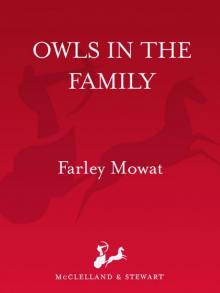 Owls in the Family
Owls in the Family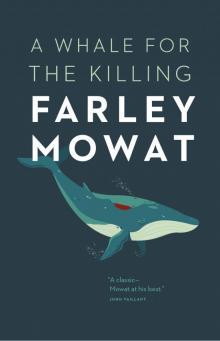 A Whale for the Killing
A Whale for the Killing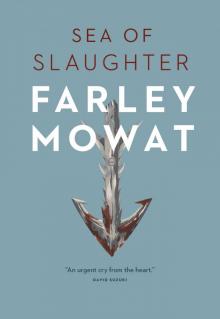 Sea of Slaughter
Sea of Slaughter The Curse of the Viking Grave
The Curse of the Viking Grave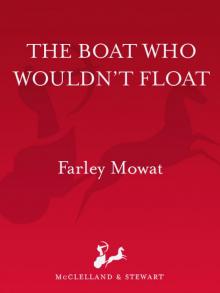 The Boat Who Wouldn't Float
The Boat Who Wouldn't Float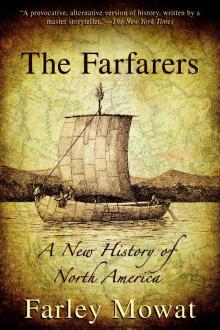 The Farfarers: Before the Norse
The Farfarers: Before the Norse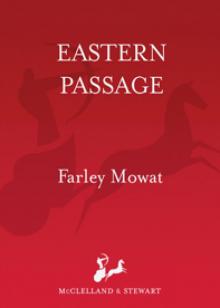 Memoir
Memoir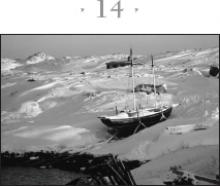 Bay of Spirits: A Love Story
Bay of Spirits: A Love Story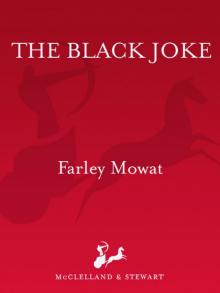 The Black Joke
The Black Joke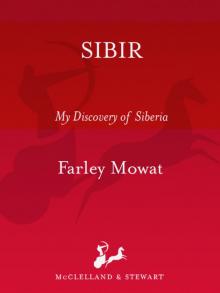 Sibir: My Discovery of Siberia
Sibir: My Discovery of Siberia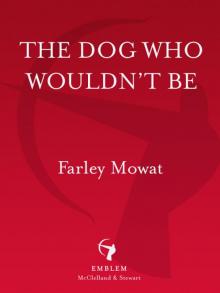 The Dog Who Wouldn't Be
The Dog Who Wouldn't Be Never Cry Wolf
Never Cry Wolf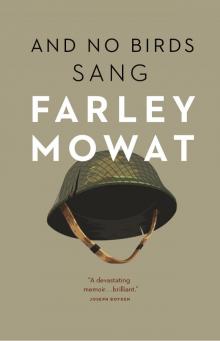 And No Birds Sang
And No Birds Sang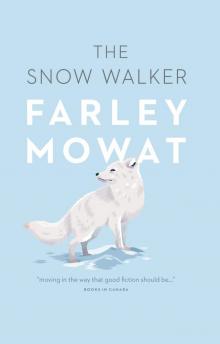 The Snow Walker
The Snow Walker Born Naked: The Early Adventures of the Author of Never Cry Wolf
Born Naked: The Early Adventures of the Author of Never Cry Wolf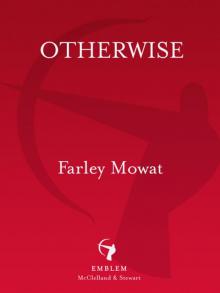 Otherwise
Otherwise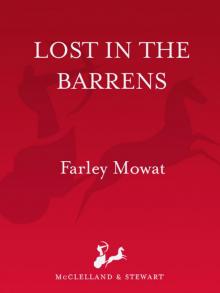 Lost in the Barrens
Lost in the Barrens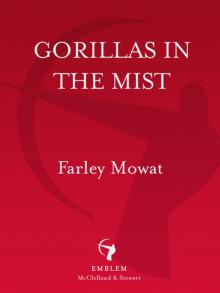 Gorillas in the Mist
Gorillas in the Mist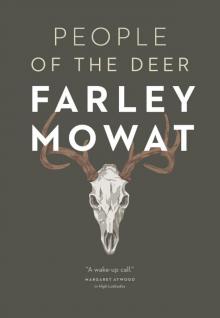 People of the Deer
People of the Deer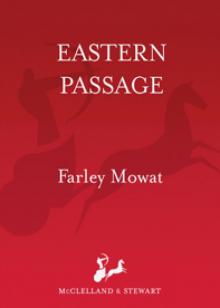 Eastern Passage
Eastern Passage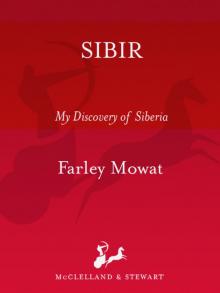 Sibir
Sibir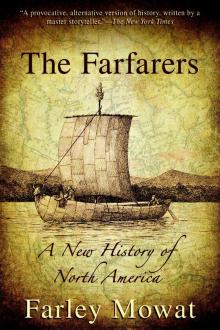 The Farfarers
The Farfarers A Whale For The Killing (v5.0)
A Whale For The Killing (v5.0)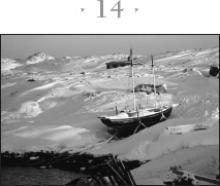 Bay of Spirits
Bay of Spirits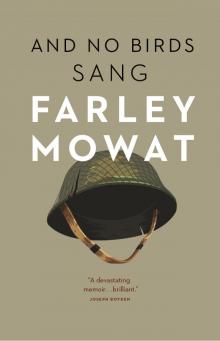 And No Birds Sang (v5.0)
And No Birds Sang (v5.0)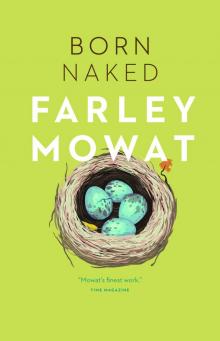 Born Naked
Born Naked